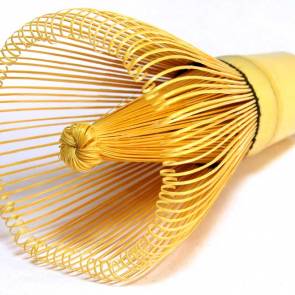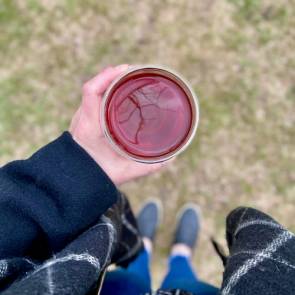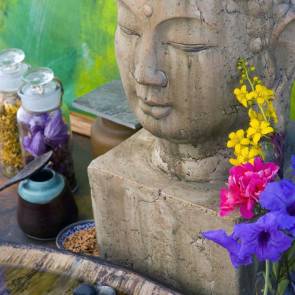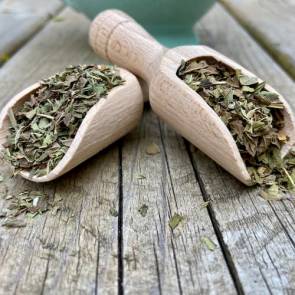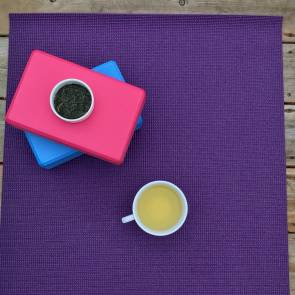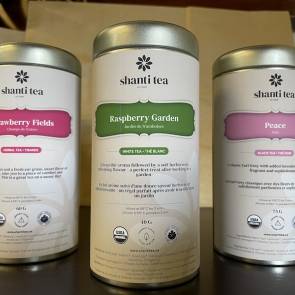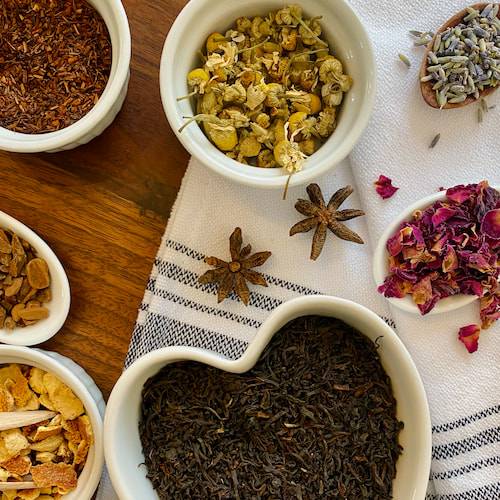
Are you interested in shaking up your tea routine? Try your hand at blending! At-home tea blending can be a fun way to get creative, experience different flavours and discover new favourites. Blending tea is like building a recipe and while there’s definitely some art and science to it, we’re sharing a few easy methods for you to try at home.
Before we get started, in terms of which ingredients to combine, black tea and rooibos tend to blend well with sweeter ingredients (vanilla, cinnamon, cacao), whereas green teas work well with fruity and tart ingredients (strawberries, orange peel, or lemongrass). This isn’t a hard rule – it’s just a guideline (and we deviate from it in some of our examples below!). Try different things – you can use your favourite blends, drinks/cocktails, snacks/food combos, or desserts as inspiration! Alternatively, you can choose herbs for their functional properties (e.g. for relaxation, or to soothe an upset stomach).
Combine blends
Instead of creating a tea blend completely from scratch, start by combining two blends to make something new. We love this method because it takes away the pressure of starting from nothing. Choose two blends that have the same base tea or herb (e.g. black tea blends, or rooibos blends). Then, combine them in a bowl using a 1:1 ratio (equal parts) to start. Mix your new blend together and try it out. Are the flavours complementary? Is one blend/flavour dominating over the other? Make a few notes and then try again, with different ratios. Take notes and repeat!
Try this:
Banana Bread + Vanilla Rooibos (think banana bread, with icing!)
Blueberry White + Strawberry White (the perfect mixed berry iced tea)
Orange Black + Irish Cream or Royal Cream Earl Grey (citrus with creamy notes)
Mini blends
Another approach to tea blending is to start with your favourite pure tea (or herbal) and then choosing one other ingredient to combine it with. This might sound overly simple, but two ingredients is all you need for a blend. This technique will help you understand how your chosen ingredient can change the flavour of your tea. Start with a 3:1 ratio of tea (or main herbal) to your additional ingredient. You can then experiment with the ratios using the same two ingredients, or keep one ingredient the same and change up the other.
Try this:
Keemun + rosehips
Keemun + orange peel
Sencha + ginger
Gunpowder + ginger
Grow your blends
If you’re ready to tackle more complex blends, you can use the mini blends approach and scale up. Choose a main tea or herbal (we call this the active ingredient), then a secondary or supportive ingredient (to enhance your main ingredient), followed by what is known as a catalyst ingredient (something to add a pop of flavour). Start with a ratio of 3:2:1 (or even less for the catalyst – maybe .50 or .25 would be better, depending on how strong it is), and then adjust as needed. You can then experiment with adding 1-2 other ingredients to bring everything together, if desired. As a final step, consider adding flower petals (e.g. cornflower or sunflower) as a decorative element.
Try this:
Sencha + orange peel + ginger
Pu’erh + cacao + cinnamon
White Peony (Bai Mu Dan) + rose petals + lemon peel
Have fun experimenting and don’t forget to share your patented blends with friends and family!


